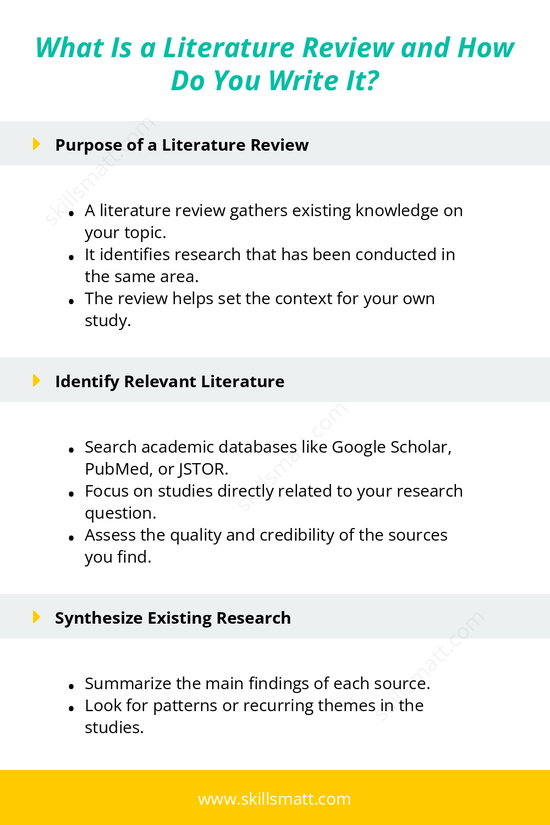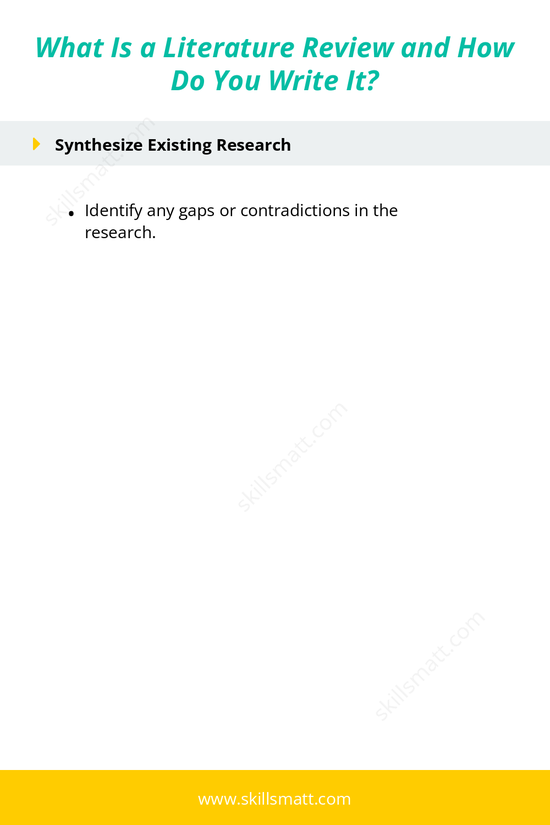What Is a Literature Review and How Do You Write It?
A literature review is an essential part of academic writing. Here's how to write one:
Purpose of a Literature Review
- A literature review gathers existing knowledge on your topic.
- It identifies research that has been conducted in the same area.
- The review helps set the context for your own study.
Identify Relevant Literature
- Search academic databases like Google Scholar, PubMed, or JSTOR.
- Focus on studies directly related to your research question.
- Assess the quality and credibility of the sources you find.
Synthesize Existing Research
- Summarize the main findings of each source.
- Look for patterns or recurring themes in the studies.
- Identify any gaps or contradictions in the research.
Incorporate Literature Into Your Paper
- Use insights from the literature to strengthen your argument.
- Show how existing studies support or challenge your research.
- Demonstrate how your work fits into the broader academic conversation.
Ensure Originality
- Use the literature review to highlight how your research is unique.
- Identify areas where your research fills gaps in the existing knowledge.
- Point out the novel aspects or perspectives your study brings to the field.
Structure of a Literature Review
- Organize the review either by themes, methodology, or chronologically.
- Ensure logical flow between sections for clarity.
- Summarize and analyze key points from each study systematically.
Write the Review
- Draft the literature review, clearly outlining findings from each source.
- Provide context and analysis for each study.
- Explain how each piece of literature contributes to your research.
Revise and Proofread
- Ensure the review is well-structured and coherent.
- Check for clarity, conciseness, and flow between sections.
- Proofread for grammar and spelling errors.
- Ensure proper citation and referencing throughout.


